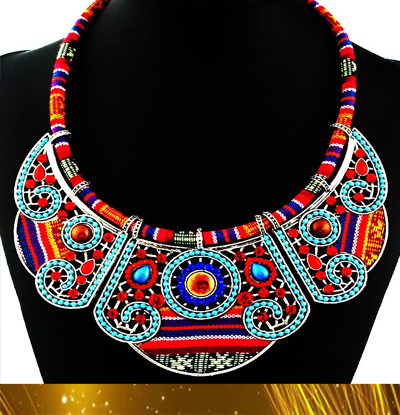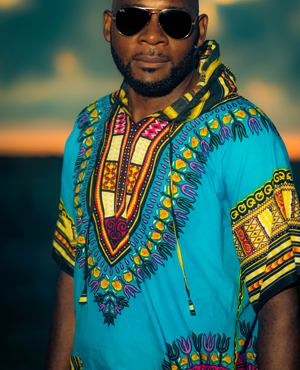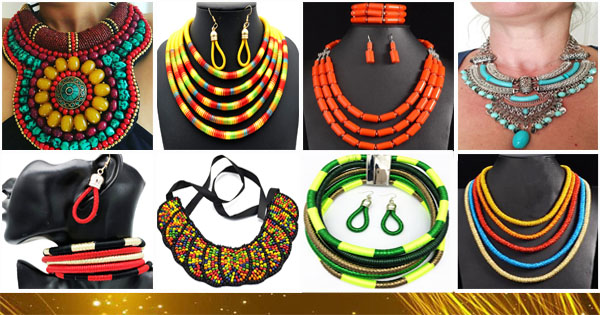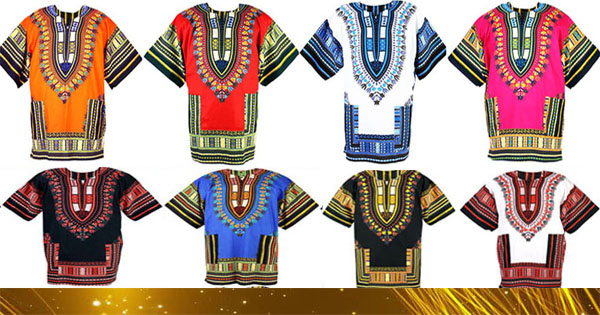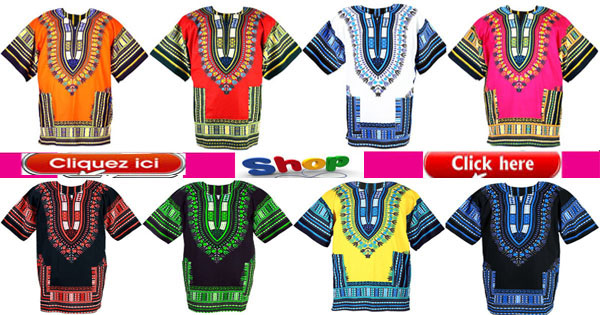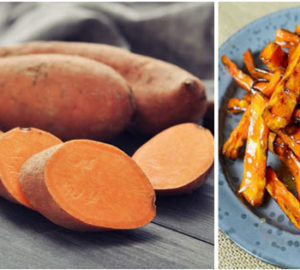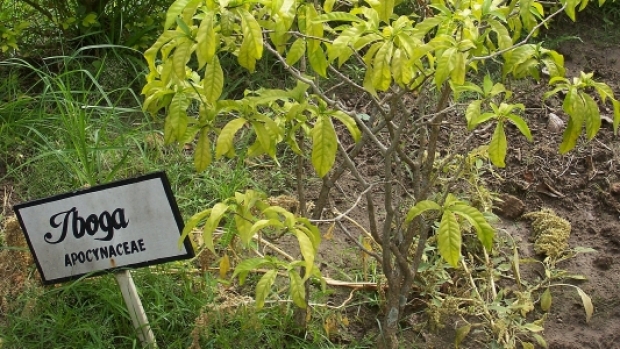
Have you heard of the traditional iboga plant? Iboga is an extraordinary herb that fights addiction to nicotine, alcohol, heroin, cocaine and methadone. It fights and allows many people in the world to free themselves from their addictions that spoil their lives.
Iboga: a plant that fights addiction to nicotine, alcohol, heroin
What is iboga? Where is he from ?
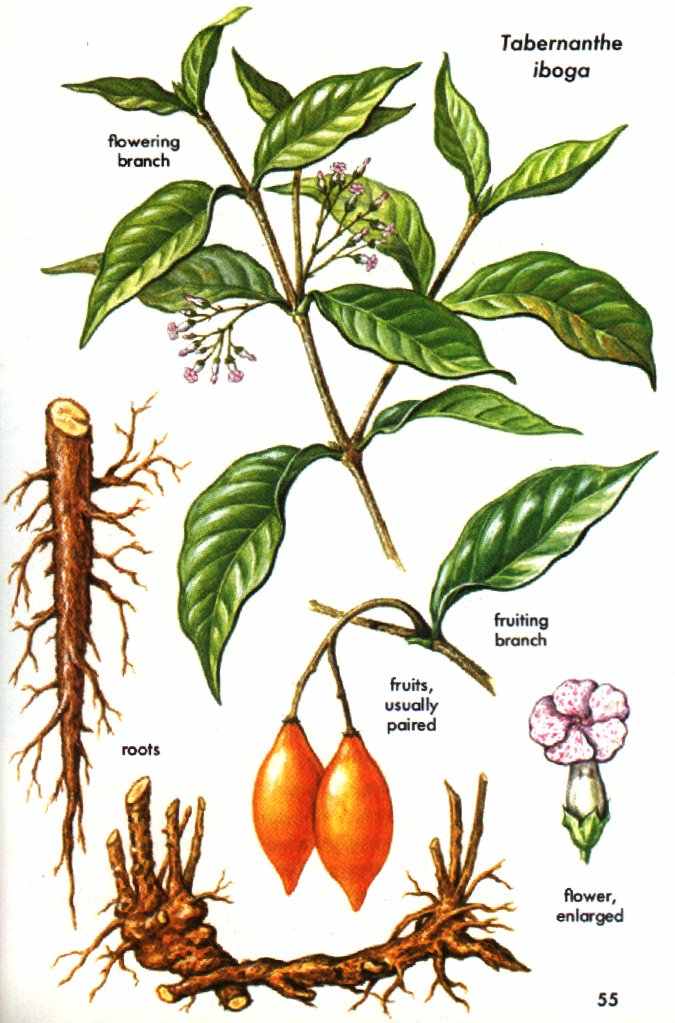 |
 |
The iboga (Tabernanthe iboga) is a traditional plant native to the forests and savannah of Gabon, southern Cameroon, Congo and Equatorial Guinea. The iboga is a shrub of the apocynaceae family that is found in the equatorial forests of Africa. This plant is also called Eboga, Eroga or Eboka.
This plant is found in Gabon, Cameroon and the Congo.
In the genus tabernanthe, there are two species the tabernanthe iboga and the tabernanthe manii which have a dozen alkaloids, notably ibogaine. These alkaloids are located in the bark of the iboga root.
Ibogaine is famous for helping to combat addictions to nicotine, alcohol, heroin, cocaine and methadone. Ibogaine is extracted from the root of Tabernanthe iboga.
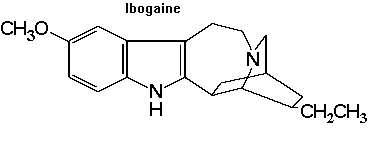
Description
- It is part of the apocynaceae family.
- There are two species Tabernanthe iboga and Tabernanthe manii.
- It is a shrub that can measure 1.5 to 2 m. But, it can reach 6 to 10 m high in good conditions.
- The iboga (Tabernanthe iboga) produces yellow and pink flowers growing in groups of 5 to 12. These flowers give fruits of oval or round shape which, before flowering, are green in color and then become orange. The iboga leaves are small.
- Ibogaine is recovered from the bark of the iboga root. Ibogaine produces hallucinogenic effects in high doses.
The iboga tabernanthe is found in the equatorial and tropical forests of Africa. At 15 ° C, the iboga stops growing. And, at 10 ° C, it loses its leaves. - Preparation of iboga: the fresh or dried root is swallowed after maceration in palm wine. The dose is about 10g of dry root powder. Pygmies or indigenous people chew the bark of the root to remain immobile and alert during hunting or during their ancestral rites.
- Gorillas and wild boars eat the roots of iboga.
Below are detailed photos of iboga:
 |
 |
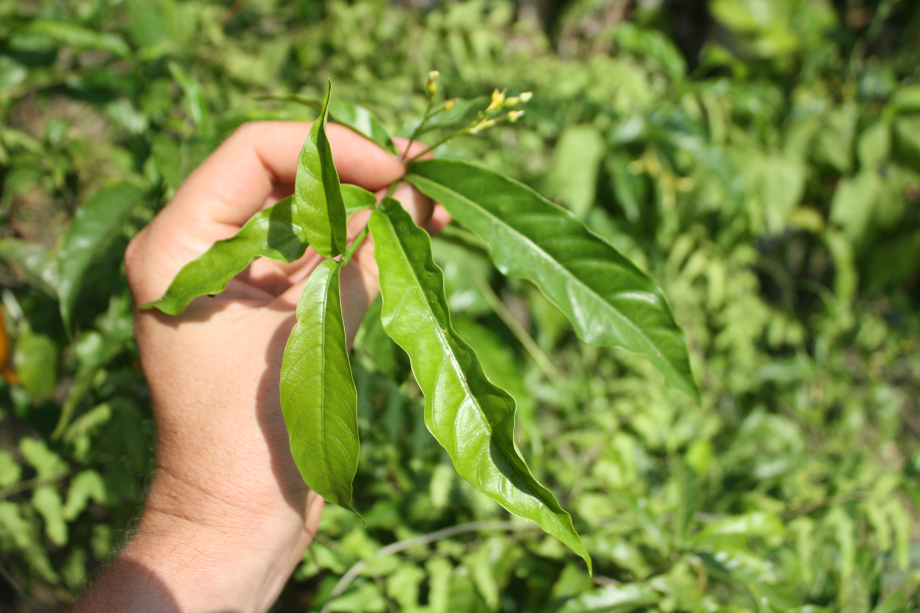 |
| Iboga leaves | ||
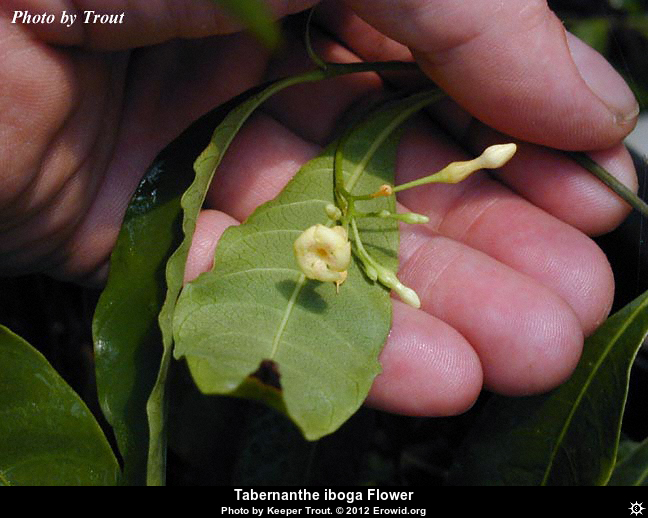 |
 |
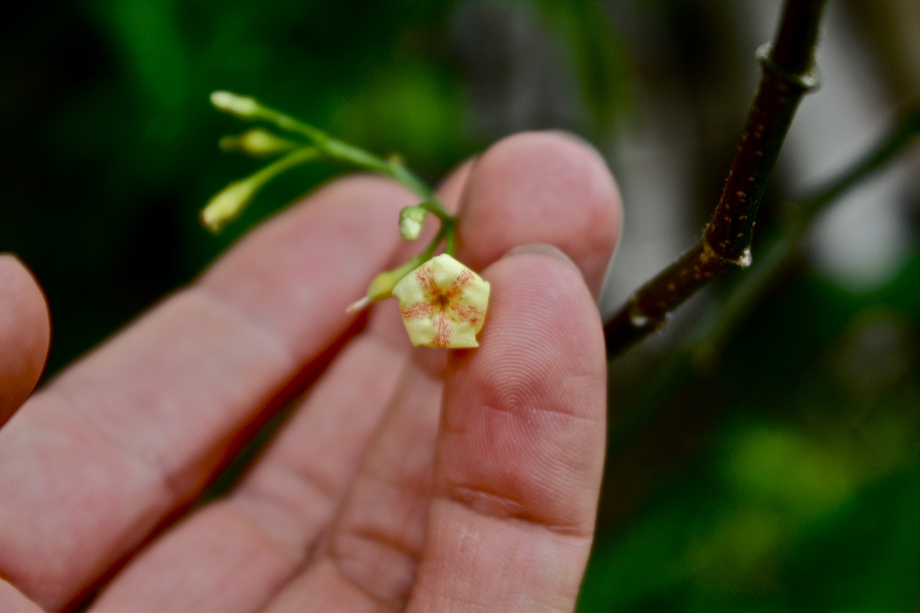 |
| Iboga flowers | ||
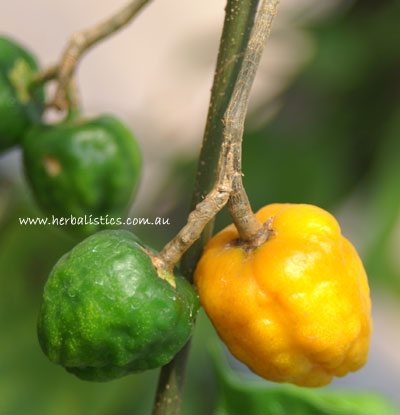 |
 |
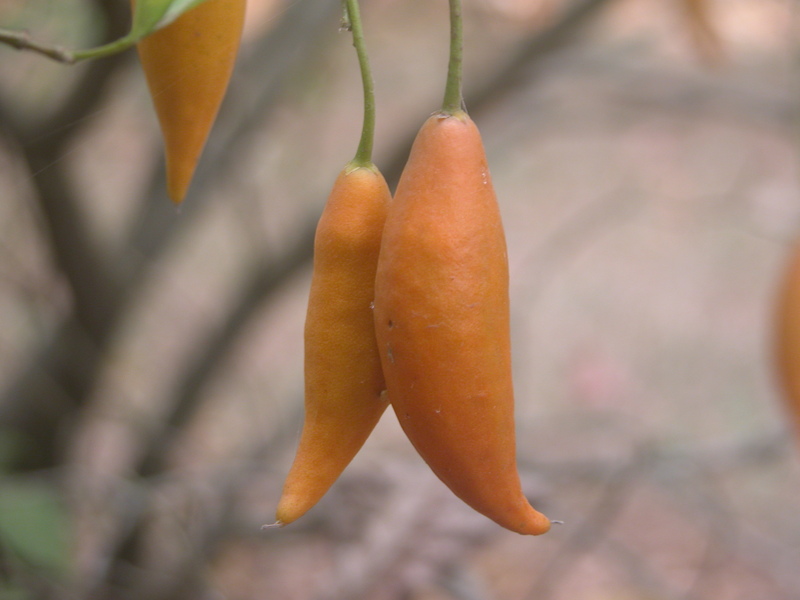 |
| Fruits | ||
 |
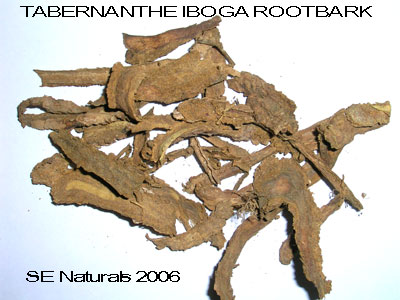 |
 |
| Roots and bark | ||
 |
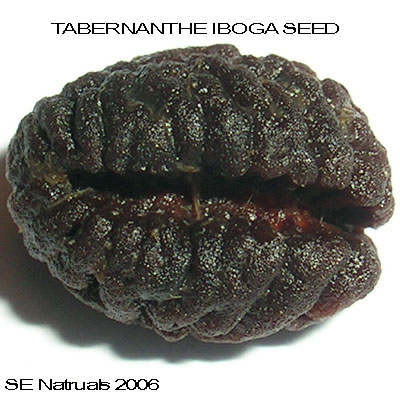 |
|
| Seeds | ||
What are the benefits of iboga?
Ibogaine extracted from the root of liboga, helps fight drug addiction. It is very effective in fighting addictions to nicotine, alcohol, heroin, cocaine and methadone. This plant has extraordinary healing powers.
Ibogaine treatments have become an alternative solution for treating addictions.
In addition, new properties have been highlighted. Liboga helps the brain to reorganize and the nerve pathways to regenerate by releasing neurotrophin.
Warning: Be careful with the doses of iboga you take. Iboga has a hallucinogenic effect. It requires medical monitoring. We don’t have fun with it.
The use of ibogaine in traditional and western medicine..
- Ibogaine in traditional medicine
For a very long time, Pygmies have used iboga root. It has a more traditional use in African societies. That is to say, we use this plant to heal, but also for curative, physiological and psychological purposes.
The Bwiti cult of the Mitsogo of Gabon, the Fangs of North Gabon and Cameroon practice the culture of their ancestors by using iboga in their initiation rites. For them, iboga is the tree of knowledge of which the Bible speaks. A sacred wood with priceless power. The warriors and hunters of these tribes used ibogaine to fight fatigue. Others used it to get in touch with the spirit of their ancestors. During group celebrations, dancers took this plant as a stimulant.
The President of Gabon Léon Mba was a member of the Bwiti cult and defended this practice before the French colonial administrations.
- Ibogaine in Western societies
History & chronology of iboga
In Western societies, many researchers around the world are researching iboga. They are particularly interested in these abilities to stop addictions to heroin, cocaine, methadone, alcohol, nicotine.
| Date | History |
| 1864 | The first description of T. iboga is published. A sample is brought to France from Gabon. A published description of the ceremonial use of T. iboga in Gabon appeared in 1885. In 1889, it was called Tabernanthe iboga. |
| 1901 | Ibogaine is isolated and crystallized from T. bark of the iboga root. |
| 1901-1905 | Ibogaine is isolated and crystallized from T. bark of the iboga root. |
| 1939-1970 | Ibogaine is sold in France Lambaréné, a “neuromuscular stimulant,” in 8 mg tablets, recommended for indications that include fatigue, depression, and recovery from an infectious disease. |
| 1955 | Harris Isbell administers doses of ibogaine up to 300 mg to eight previously detoxified morphine addicts at the United States Center for Addiction Research in Lexington, Kentucky. |
| 1957 | The description of the chemical structure of the definitive ibogaine is published. The total synthesis of ibogaine is reported in 1965. |
| 1960 | In the sixties, LeoZeff, a psychologist and Claudia Naranjo, a psychiatrist will treat more than 700 patients with ibogaine. For them, iboga is a very effective herb in the treatment of psychiatric illnesses. |
| 1962-1963 | In the United States, Howard Lotsof, a young nineteen year old drug addict, administered ibogaine (approximately 500 mg) to 6 of these companions. After 36 hours, Howard and his companions, addicted to heroin or cocaine, were able to stop their addictions. Since this game, he has been totally convinced by the virtues of iboga and will fight to highlight it. While still receiving ibogaine, he administered to 19 people, 7 of whom were drug addicts. 5 of them stopped their addictions, without feeling any lack, for at least 6 [huge_it_video_player id = “35”] |
| 1967-1970 | The World Health Assembly classifies ibogaine with hallucinogens and stimulants as a “substance that can cause dependence or endanger human health.” The United States Food and Drug Administration (FDA) assigns the classification to Ibogaine I Annex. The International Olympic Committee only prohibits Ibogaine as a potential doping agent, and sales of Lambaréné cease in France. |
| 1969 | Dr Claudio Naranjo, psychiatrist, receives a French patent for the psychotherapeutic use of ibogaine at a dose of 4 to 5 mg / kg. |
| 1985 | Howard Lotsof receives a US patent for the use of ibogaine in opiate withdrawal. Other patents follow indications of addiction to cocaine and other stimulants, alcohol, nicotine, and polydrug use. |
| Doctor Dzoljic, with his small sample of ibogaine tested its effects on rats dependent on morphine. The results were very convincing. Following this information, Dr. Stanley Glick of “Albany Medical College” began to research ibogaine. In a publication, he points out that ibogaine reduces the craving for morphine by reversing certain effects of morphine and cocaine in the brain. “When I heard about ibogaine, I became very curious, and And the more I experimented, the more interesting it became, “says Stanley Glick, professor and research director at the Center for Neuropharmacology and Neuroscience at Albany Medical College in New York. Many researchers are interested in close to ibogaine. We can quote doctor Patricia Broderick “City Universty of New York” and doctor Henry Sershen of “Nathan Cline Institute” who join doctor stanley Glkick in various works on iboga. | |
| 1988 | American and Dutch researchers publish the first suggestive findings of the effectiveness of ibogaine in animal models of addiction, including reduced opioid self-administration and withdrawal, as well as decreased cocaine self-administration. |
| 1989-1993 | The treatments are carried out outside conventional medical circles in the Netherlands concerning the International Coalition of Addict Self-Help (iCash), Dutch Addict Self Help (DASH), and NDA international. |
| 1991 | Based on case reports and preclinical data suggesting possible efficacy, NIDA Drug Development Division (MDD) begins its ibogaine project. The main objectives of the ibogaine project are preclinical toxicological evaluation and the development of a human protocol. |
| Août 1993 | FDA Advisory Group meeting, chaired by Curtis Wright’s medical review officer, is held to formally review the Investigational New Drug Application filed by Dr. Deborah Mash, professor of neurology at the University of Miami School of Medicine. Approval is given for human trials. The approved ibogaine dosage levels are 1, 2, and 5 mg / kg. The Phase I titration study began December 1993, but activity was eventually suspended due to lack of funds. |
| Octobre 93- Décembre 94 | The National Institute on Drug Abuse (NIDA) holds a total of four Phase I / II protocol development meetings, which include external consultants. The resulting draft protocol calls for single or fixed doses of ibogaine of 150 and 300 mg compared to placebo for the indication of cocaine dependence. |
| 1995 | NIDA ibogaine meeting is held in Rockville, Maryland, chaired by MDD Deputy Director, Dr. Frank Vocci. The possibility of NIDA funding a human trial of the efficacy of ibogaine is being considered. Opinion of representatives of the pharmaceutical industry are mainly critical, and have an important influence in the decision not to finance the trial. NIDA is completing its ibogaine project, but it continues to support preclinical research on iboga alkaloids. |
| Mi 1990’s- 2001 | Ibogaine is becoming more and more available in other circles, due to the lack of approval in Europe and the United States. Parameter treatments based on a conventional medical model are carried out in Panama in 1994 and 1995 and in Saint Kitts from 1996 to the present day. Informal scenes begin in the United States, Slovenia, Britain, the Netherlands, and the Czech Republic. The ibogaine mailing list started in 1997 and announced an increasing use of the Internet in the ibogaine medical subculture. |
|
Ibogaine: A Review by Kenneth R. Alper The latest studies have highlighted important new properties: iboga has stimulating effects on energy metabolism and, according to Professor Dorit Ron in Israel, ibogaine stimulates the synthesis and release of neurotrophin, which helps the nerve pathways to regenerate and the brain to reorganize. Sources: www.myeboga.com |
|
Some testimonies on iboga
Positive testimonials:
Numerous testimonies confirm the benefits of ibogaine. These people claim to have been cured by this molecule. Others, however, were not unlucky. We will see why?
Roberto, 45, an Italian living in New York points out: “My life has completely changed, twelve hours after my ibogaine treatment, I was weaned from seventeen years of addiction. It was incredible, I can’t explain it. ” For 7 years, it has been clean.
Eric, 37, a Frenchman says: “I was weaned from three years of cocaine addiction in a weekend in 2004. Since then, I have never relapsed.”
Nicolas, a former drug addict, explains: “My withdrawal was immediate. While it was unimaginable for me not to take doses, because I was several grams a day.”
Unlucky testimonials:
Daniel, who has been addicted to heroin and cocaine for more than thirty years, explains: “For me, it didn’t work.” Two weeks later, he started taking drugs again.
Why the failure? Taking ibogaine requires therapeutic follow-up and the patients must especially not start taking drugs again, otherwise it will not be effective. Patients must absolutely change their lifestyle. Heart patients should especially not mix iboga and taking drugs. Many fatal accidents have occurred in this case.
In addition, care must be taken with the prescribed dosage of iboga. Too much dosage can lead to death. (compulsory medical follow-up)
- With a low and moderate dosage (10 to 50 mg): ibogaine has stimulating and euphoric effects.
- With a higher dosage (qq 100 mg up to 1 g): it leads to a state of trance with hallucinations (visual and auditory). This phase continues with a long sleep phase when the effects are gone.
- With a very strong dosage: this can trigger convulsions, paralysis or even worse. (Attention, for people with heart)
Unfortunately iboga is banned in several countries including France, the United States, Belgium, Poland, Denmark and Switzerland. It is classified as a drug. On the other hand, in Israel India, Slovenia clinical trials are carried out with the agreement of the Ministry of Health. Official health centers are open in Panama, Brazil and Mexico. Since 2009, New Zealand authorizes the medical prescription of ibogaine to patients. In Gabon, there are centers which treat patients with ibogaine.
The pharmaceutical industry is against ibogaine treatment because it considers it not profitable enough. Companies think they cannot make a lot of money in drug treatment. And you, what do you think of ibogaine?
